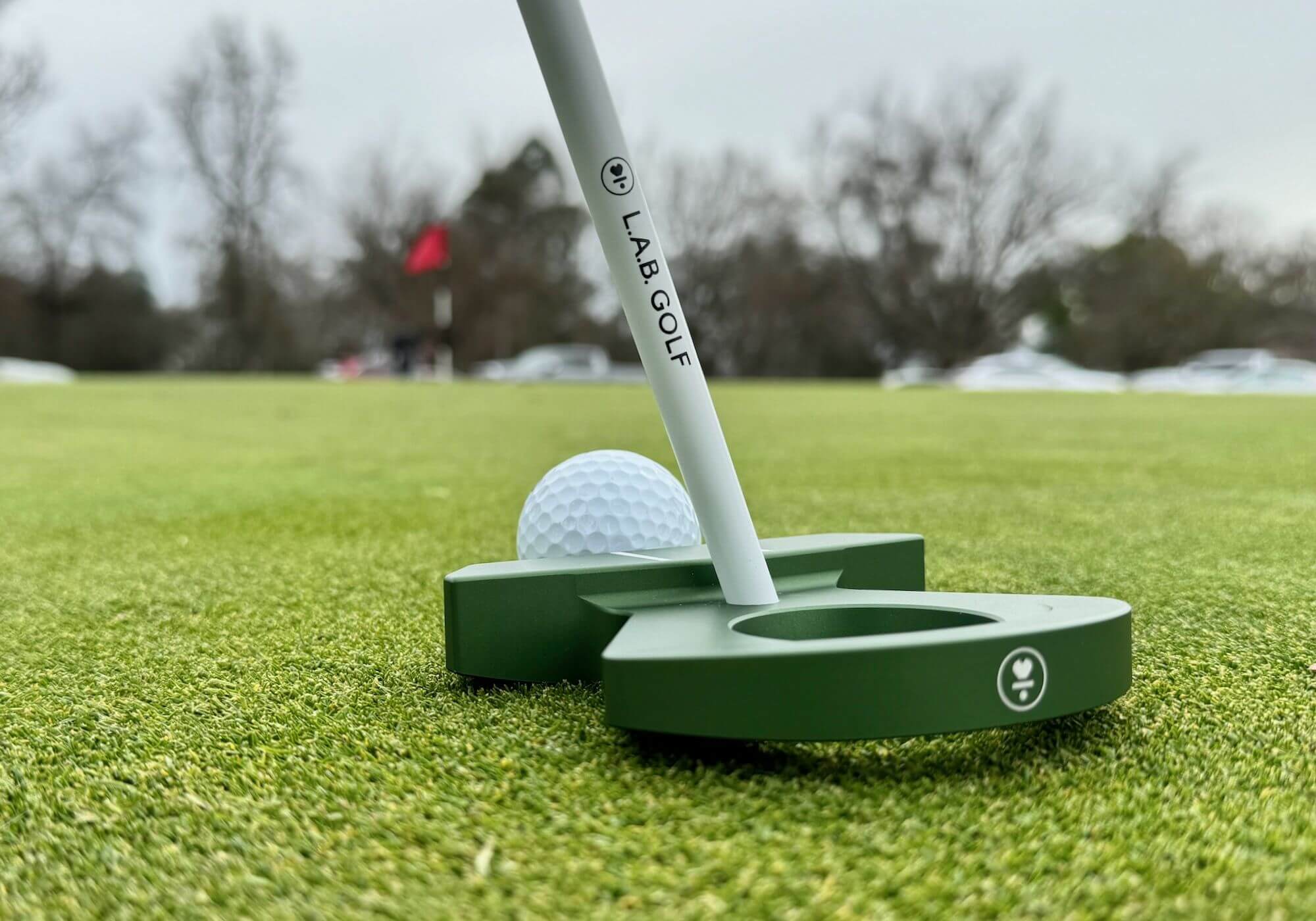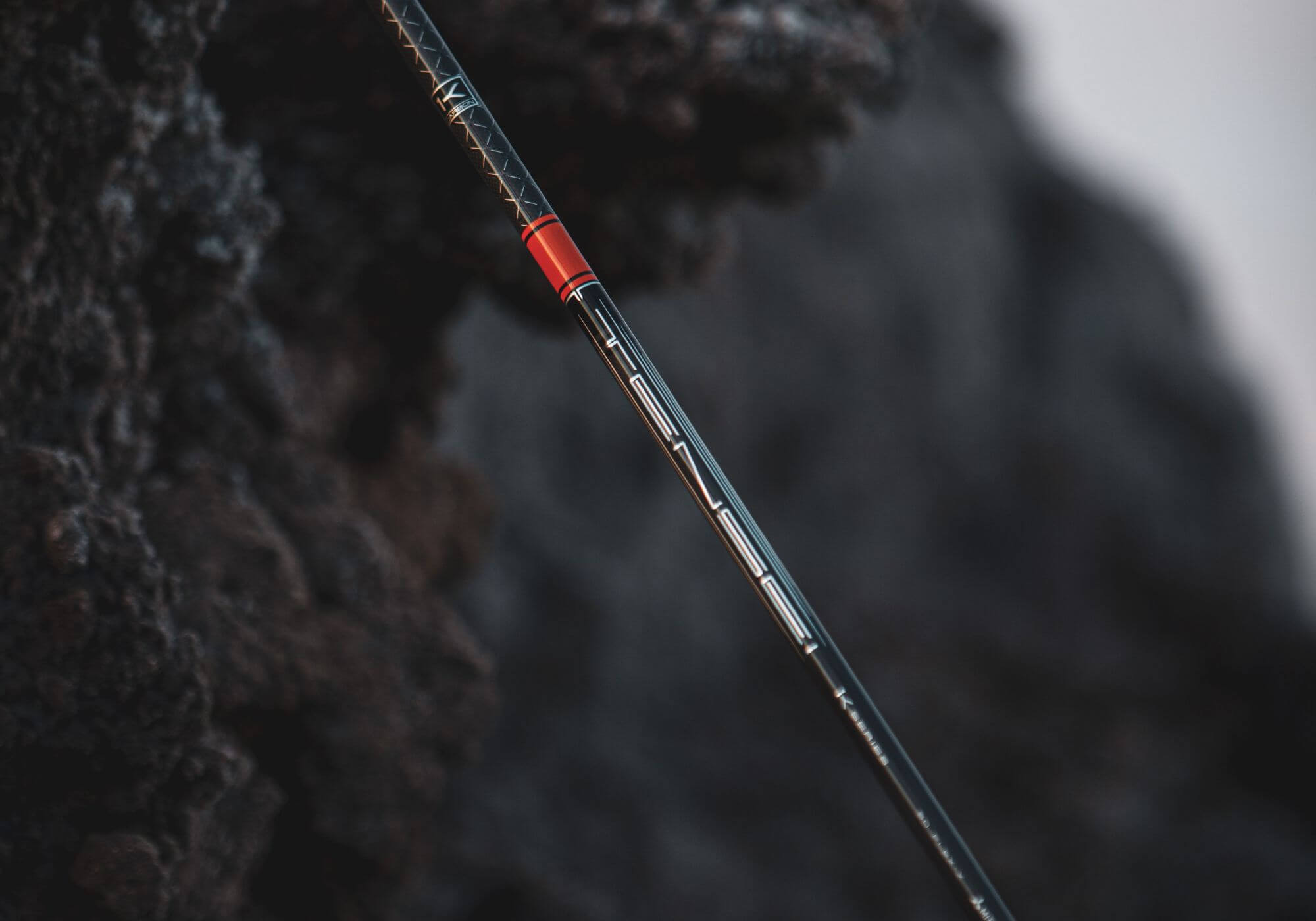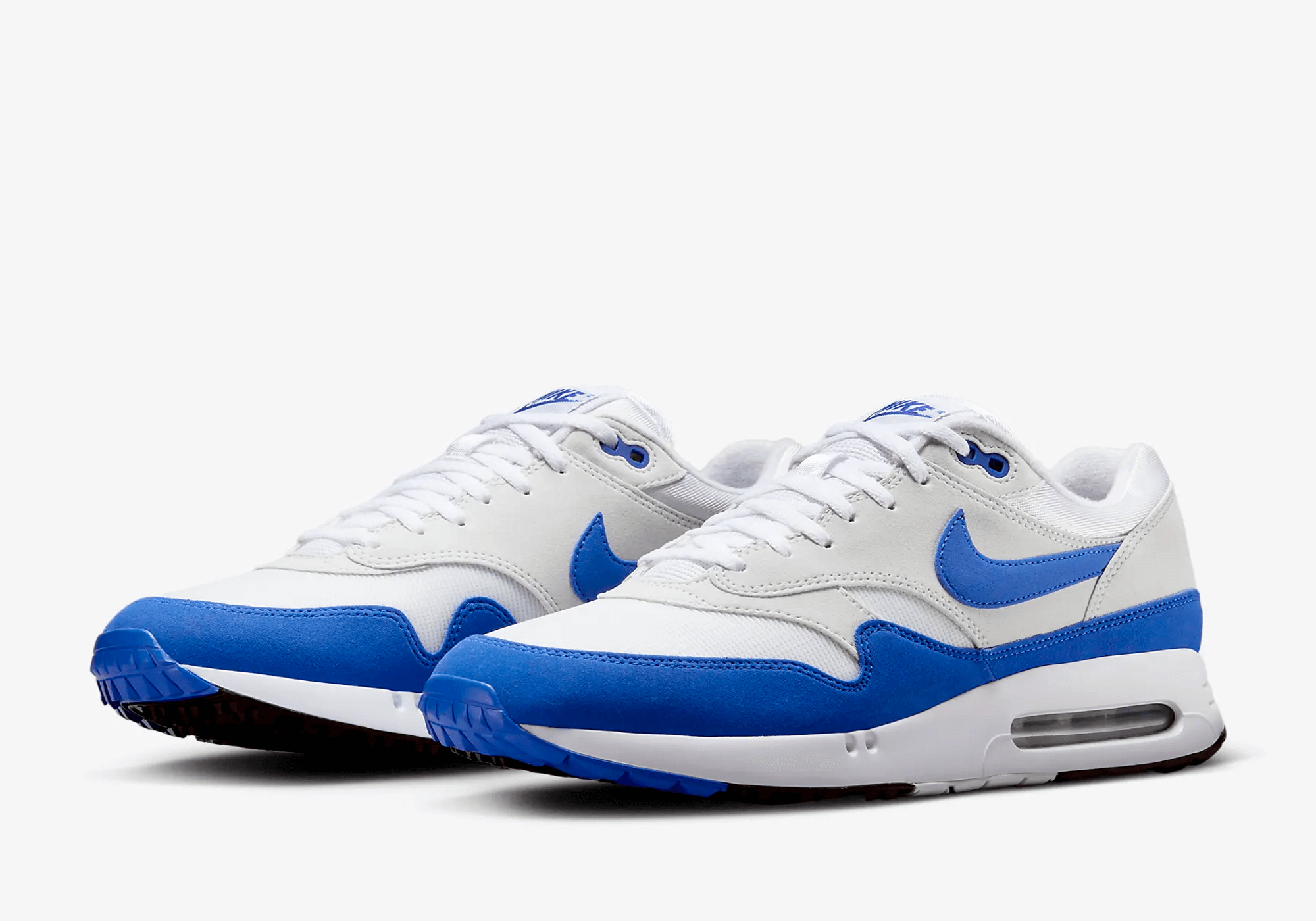“You’re a better putter than you think you are.” This tagline has become increasingly recognized as L.A.B. Golf’s putters appear more frequently on courses and professional tours. The key feature of these putters is the Lie Angle Balance technology designed to ensure the putter remains perfectly balanced according to each golfer’s unique lie angle. This balance is designed to eliminate torque, allowing golfers to focus purely on line and speed without worrying about manipulating the putter face.
Testing the DF3: Data in the lab
Our Forum members took a methodical, data-driven approach to testing the DF3, using advanced fitting technologies like Quintic and SAM PuttLab. These tools are highly regarded in the golf industry for providing detailed insights into putter performance, measuring everything from clubhead speed to shaft angle and the exact roll of the ball. This rigorous testing was crucial for objectively evaluating whether the DF3 could genuinely improve putting performance.

Is the DF3 plug and play?
L.A.B. promotes their putters as torque-free, meaning they don’t twist in your hands, a significant departure from traditional putters. Several testers found that adapting to this design required a period of adjustment. The DF3’s unique balance initially felt unfamiliar and some golfers needed time to adjust their stroke mechanics to fully benefit from the putter.
Sam Hahn, L.A.B.’s CEO, provided some insight into this adjustment process:
“While L.A.B. putters can be plug and play, oftentimes they require a bit of an adjustment. There are some fundamental setup changes… But the biggest change…is generally around the mentality…with a L.A.B. putter you just have to let it stay square, and this can tend to inspire some changes in grips, grip pressure, ball position, stance, things like that.”
This period of adjustment was crucial for the testers. While the transition was not always seamless, those who persevered found significant improvements in their putting performance, validating the putter’s unique design.
Testers’ experiences: The data tells the story
JBern’s journey
A 7.4 handicap golfer from Michigan, JBern was intrigued by the DF3’s scientific approach. However, the transition from his arm-lock putter was challenging. The DF3’s unique balance required a complete overhaul of his putting stroke, which initially led to frustration. Yet, once JBern adjusted, the benefits of the DF3 became evident in his performance metrics.
- Before DF3: JBern averaged 34.1 putts per round, often feeling that putting was the weakest aspect of his game.
- With DF3: After adapting to the DF3, his average putts per round dropped to 31.54.
- Key Metrics: His one-putt percentage increased from 4.26 to 6.34 per round, while his three-putt percentage decreased from 2.28 to 1.89. Additionally, his make percentages from inside five feet (96.5%) and 10-15 feet (37.5%) reached “Tour-level” averages, although he acknowledged the need for further improvement in the five- to 10-foot range.

New putter, new story
Quote: “At first, the DF3 felt completely different from anything I’d used before. The lack of torque was almost disorienting, but as I adjusted my grip and stance, I started to see real improvements. The more I practiced, the more confident I became. Now, I set up to the ball knowing I’ve got a good chance to sink every putt.”
Additional Quote: “Comparing the data from the ‘Current Putter’ section above, my average putts per 18 holes decreased from 34.1 to 31.54. This puts me closely matching a 0 handicap golfer according to Arccos! I significantly increased the number of one putts per 18 holes from 4.26 to 6.34, which is also in line with a scratch handicap. My number of three putts per 18 holes decreased from 2.28 to 1.89.”

Final Thoughts: “Since using the LAB DF3, there is no doubt that I putt better. It was not an instant gamechanger for me… Once I made the changes, let the technology do the work, and put in a bit of practice, my confidence rose, and my performance improved.”
Mattwillgolf’s transition
A 28.5 handicap golfer from New York state, Mattwillgolf was particularly interested in improving his distance control with the DF3. He was coming from a heavy mallet-style putter and was fitted into a similarly heavy configuration of the DF3 to maintain a familiar feel. Testing the DF3 across various settings, including on-course on the Ex-Putt simulator and on a home putting green, he quickly noticed differences in performance.

- SAM PuttLab Analysis: Early in the testing, Matt discovered he was missing the center of the face slightly towards the toe and was aiming 1.8 degrees closed with the DF3. Despite these initial findings, Matt felt confident his aim and consistency would improve as he became more familiar with the putter.
- Key Metrics: The DF3’s superior distance control was particularly noticeable on longer putts, where Matt had previously struggled. The smoother feel and sound of the DF3 were significant improvements over his previous gamer, which he described as too firm and unforgiving.
Quote: “The DF3’s feel was a revelation. My old putter felt like a hammer, and I struggled with distance control. The DF3, on the other hand, felt incredibly smooth, and once I got used to it, I found that my misses were much closer to the hole. It’s not just about avoiding three-putts—it’s about giving myself a chance on every putt.”

Game changing improvements?
Additional Quote: “Before, I was inconsistent with distance control with my gamer. The feel was never quite right. It was just too firm for me. At times, the putter reminded me of a hammer striking a nail on longer putts. After, the feel of the DF3 still amazes me. My distance control is much improved. I now find my misses are closer to the hole.”
Final Thoughts: “My issue with putting now comes down to bad reads. I find myself saying ‘Good speed, bad read.’ The DF3 has taken the guesswork out of distance control.”
CFeddie’s data-driven insights
A 13 handicap golfer from Atlanta, CFeddie was committed to a rigorous, data-driven approach to testing the DF3. Initially, he was fitted into a 34-inch putter but was later recommended to use a longer 35-inch putter to better suit his 6’3” frame. Throughout the testing period, CFeddie meticulously tracked his performance using Arccos, The Stack Putting app and his Perfect Practice mat.

- Arccos Data: His data revealed a noticeable improvement in his putting, particularly in his make percentage at eight feet where he almost doubled his success rate compared to his previous putter.
- Key Metrics: The DF3’s impact was most significant in short-putt performance, an area that had been a weakness with his previous putter. Although the transition was initially frustrating, the results spoke for themselves once he adapted to the DF3.
Quote: “The first few rounds were tough. I was pushing everything right and couldn’t figure out why. But once I relaxed my grip and trusted the putter to stay square, things changed dramatically. My make percentage from 8 feet nearly doubled, and I started seeing more putts drop that would’ve missed with my old putter.”

Additional Quote: “At 8 feet, I almost doubled my make percentage with the DF3! In conclusion, these results speak for themselves. My only (small) knock is the time needed to ‘relearn’ putting—quite frankly, it was pretty frustrating at first, but I’m glad I stuck with it and the DF3, and I were able to turn a corner (and hopefully never look back).”
Final Thoughts: “Putting was always hit or miss for me, but the DF3 has brought a level of consistency that I never had before. It’s been a game-changer.”
CFhandyman’s analytical approach
A 4.9 handicap golfer from Oakville, Ont., CFhandyman approached the DF3 test with a healthy dose of skepticism. Already a strong putter, he wasn’t sure if the DF3 could outperform his well-fitted Evnroll. However, after extensive testing and a few adjustments to his stroke, he found the DF3 offered tangible benefits.
- Pre-testing: With his Evnroll, he averaged 31.3 putts per round, with a one-putt rate of 5.4 and a three-putt rate of 0.7 per round.
- Post-testing: After 45+ rounds with the DF3, his average putts per round dropped to 30.2, and he saw a positive 0.8 Strokes Gained difference. The DF3 also performed exceptionally well in controlled Quintic Ball Roll tests, surpassing the Evnroll in several key areas.
- Key Metrics: CFhandyman noted a significant increase in confidence on short putts (4-6 feet), a crucial range for improving his overall scores.
Quote: “The DF3 wasn’t an immediate success. My first few rounds were frustrating, and I seriously considered switching back to my Evnroll. But I stuck with it, made a few tweaks, and the results started coming in. My confidence inside 6 feet is through the roof now. It’s almost like the putter is doing the work for me.”
Additional Quote: “Lab rat [DF3] knocked it out of the park on putter testing on Quintic and was highly recommended by my fitter. It also easily passed the eyeball test on course as well as long-term data to back it up.”
Final Thoughts: “After 45+ rounds with L.A.B. DF3, I can confidently say it has resulted in a significant increase in confidence, particularly in short-range putts. In the crucial 4 to 6 foot putts, I’ve gone from ‘I’m pretty sure I’ll make this’ to ‘I’m annoyed if I don’t make it.’”
Michael Riley’s experiment
Michael Riley, a 9.8 handicap golfer from Michigan, is an avid putter collector who tested the DF3 against his Evnroll Midlock and Edel EAS 4.0. He approached the test with a meticulous plan, collecting data from over 432 putts using ExPutt, Blast Motion and HackMotion sensors. The DF3 showed its strengths in consistency and short putts even if it didn’t dominate every category.
- ExPutt Data: The DF3 was particularly strong on short putts where GolfSpy MPR noticed a significant improvement in face angle consistency and distance control.
- Key Metrics: The DF3 excelled in helping him improve his performance on short to medium-length putts, which had been a primary area of focus.

Quote: “I’m a data guy, so I was looking for hard evidence. The DF3 didn’t win every category, but it shone where it mattered most—short putts. The consistency of my stroke improved, and I saw fewer big misses. It’s now my go-to putter, and I’m confident it’ll help me drop my handicap even further.”
Additional Quote: “Objectively, using Arccos’s evaluation of my SG, I am a slightly better putter with the DF3 than I was before the DF3. I remain convinced that the DF3 does precisely what L.A.B. claims for it, not only in its balance and stability through the stroke but also in the ease of alignment.”
Final Thoughts: “My L.A.B. now owns the putter slot in my bag, and I’m confident that it’s going to be a key part of lowering my scores.”
Conclusion: Is the L.A.B. DF3 worth it?
After months of rigorous testing, our Forum members unanimously agreed that the L.A.B. DF3 made them better putters. While the adjustment period varied, the long-term benefits were clear. The DF3’s innovative design and technology significantly improved putting performance, particularly for those willing to adapt their strokes.
The data supports L.A.B.’s claims and the testers’ experiences offer compelling evidence that the DF3 can be a gamechanger for golfers of all levels. Whether you’re a high-handicapper looking to improve consistency or a low-handicapper seeking that extra edge, the L.A.B. DF3 might be the perfect addition to your bag.
For a more detailed look at each tester’s journey, head over to the Forum to read the full reviews and see how the DF3 could improve your game.



